| |
2017 |
 Next
Year Previous Years Next
Year Previous Years
 |
|
|
| |
|
|
|
| |
Policies
and Practices 93
People, Politics and Protests
VIII : Left Front Government in West Bengal (1971-1982)
In “Left Front Government in West Bengal [1971-1982]”, Atig Ghosh
deliberates on “passive revolution” and questions of caste during
the specified decade of Left Front’s regime in Bengal through a
study of their policies on land reform, local self government and
refugee resettlement.
Essay by
Atig Ghosh
|
|
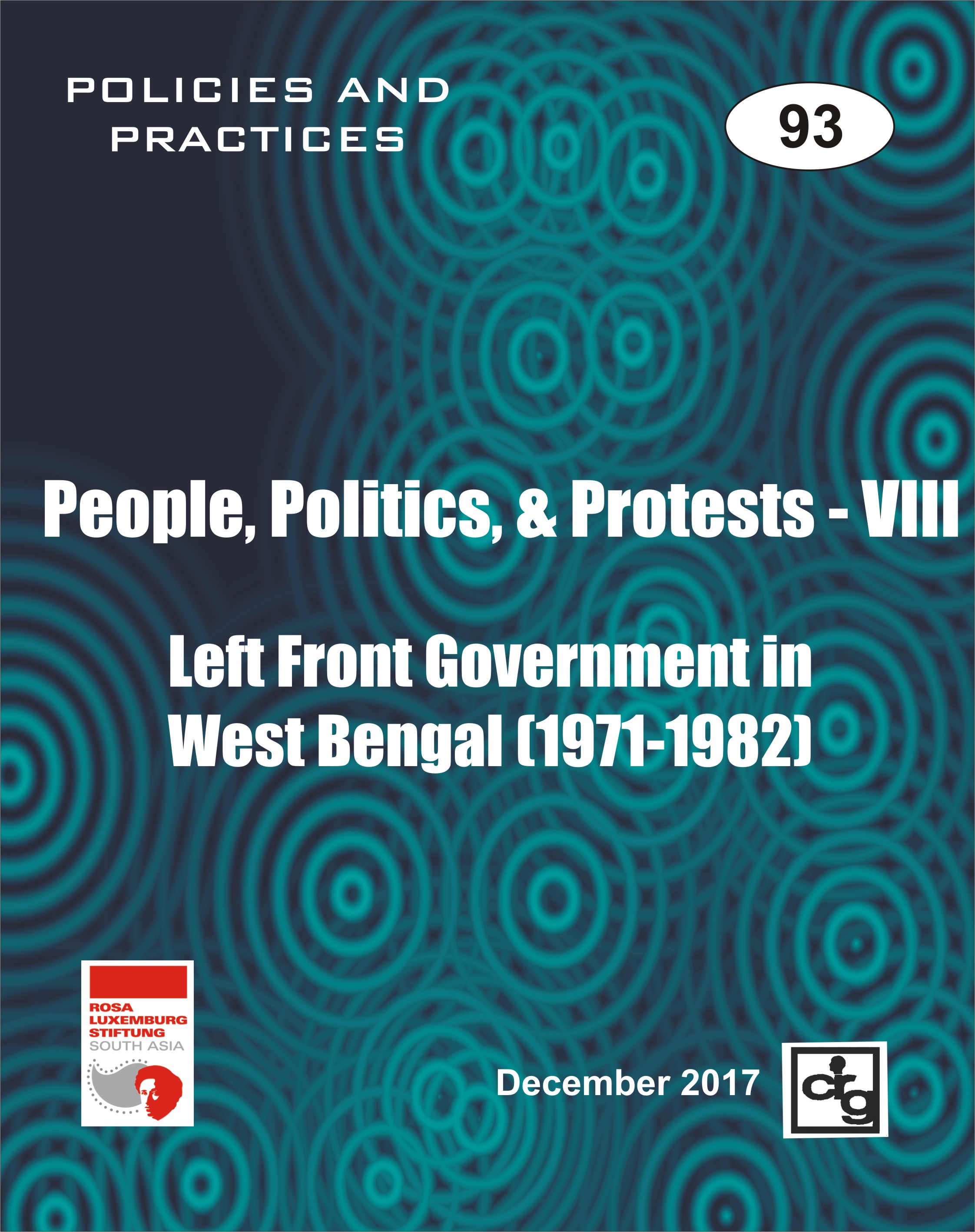 |
| |
|
|
|
| |
Policies
and Practices 92
People,
Politics and Protests VII : The Radical Rural
In “The Radical Rural”, Atig Ghosh and Anwesha Sengupta attempt to
historically understand what happens to an ideology – in this
context, Naxalbari ideology – when it travels across disparate
geographies and to different socio-economic contexts, by undertaking
case studies of two districts of Bengal, namely, Midnapore and
Birbhum. The essay attempts to situate Left ideology within networks
of continuity, and to explore its linkages.
Essays by
Atig
Ghosh & Anwesha Sengupta
|
|
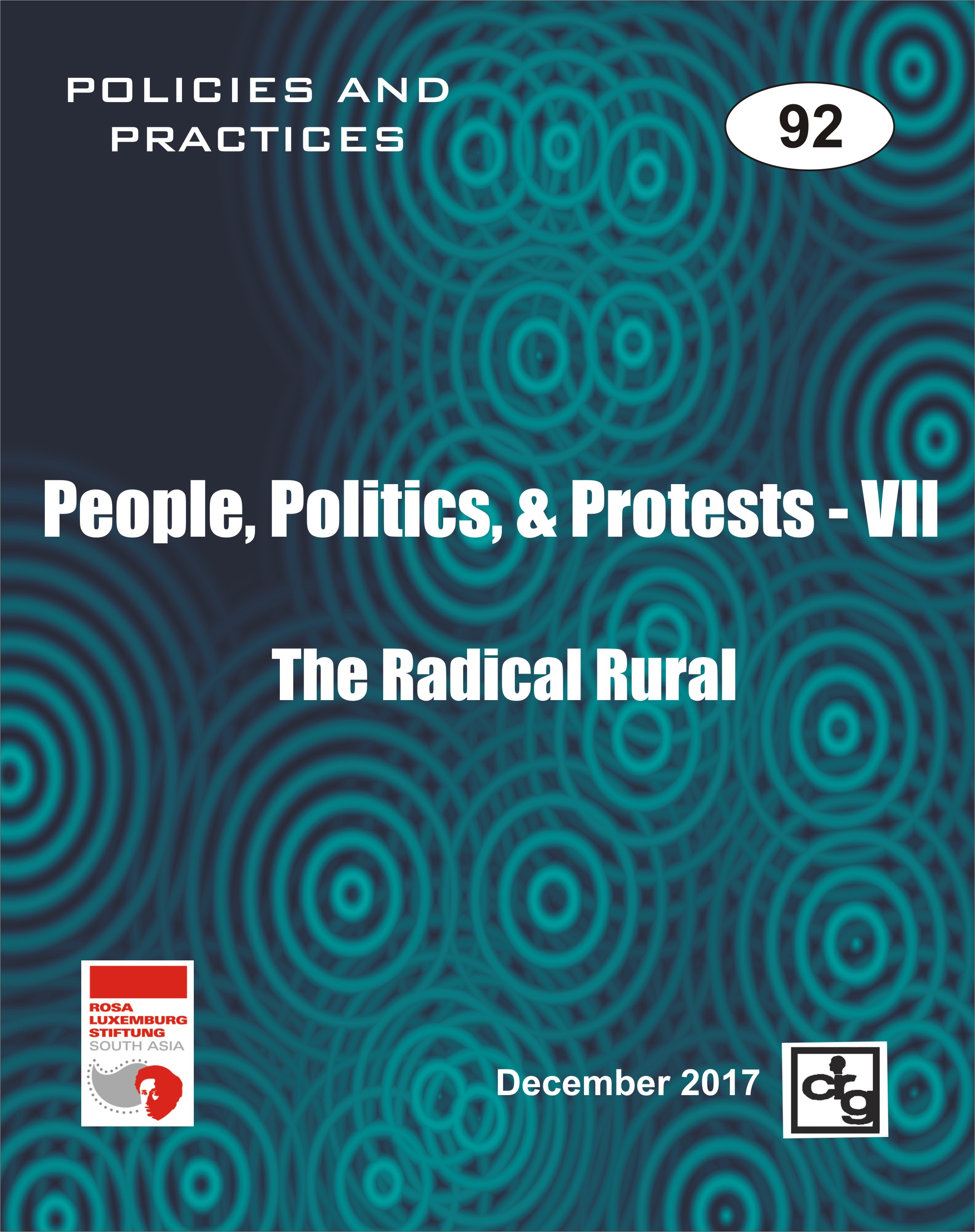 |
| |
|
|
|
| |
Policies
and Practices 91
People,
Politics and Protests VI : Karpori Thakur
This volume has two articles on the political figure of Karpoori
Thakur. Manish Kumar Jha’s “Contentious Politics and Popular
Movements: Enigma of Karpoori Thakur” examines Karpoori Thakur’s
ideas and articulations about social justice and popular politics,
and attempts to comprehend Thakur’s contentious politics and his
contribution to popular movements. Mithilesh Kumar in “Making of a
Populist Government: A Study of Karpoori Thakur’s Regime” looks at
the policies undertaken by the Thakur government in Bihar, which to
a large extent continue to define politics and government in Bihar.
Essays by
Manish Kumar Jha and
Mithilesh Kumar
|
|
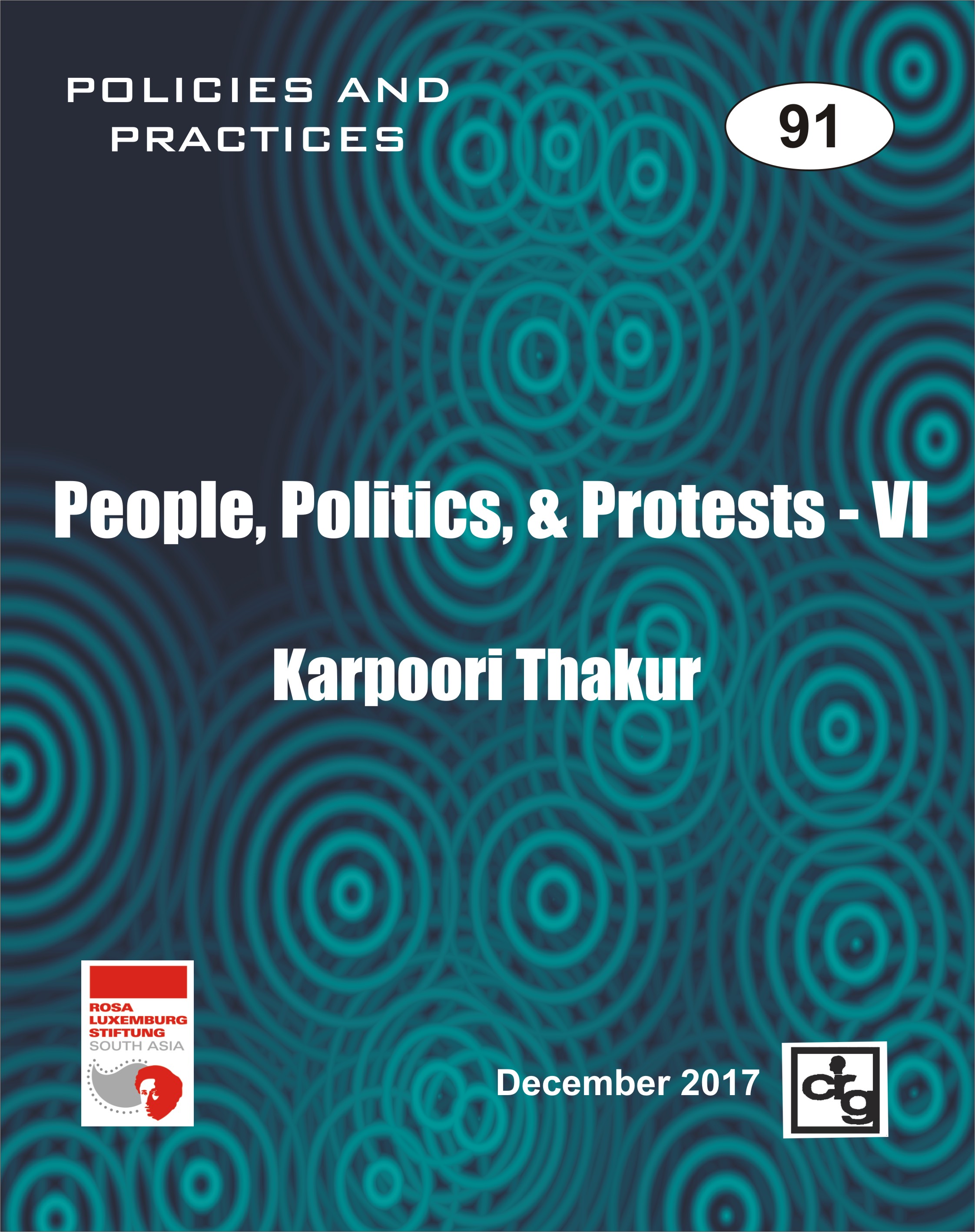 |
| |
|
|
|
| |
Policies
and Practices 90
People, Politics and Protests V
: The Creative & Cultural Dimension of the Naxalbari Movement
As is suggested by the name of the piece, “The Creative and Cultural
Dimension of the Naxalbari Movement” by Subhoranjan Dasgupta
provides some measure of the prolific abundance of creativity
inspired by the Naxalite movement. Literature of all kinds, from
novels, poetry and short stories, to plays and autobiographical
journals and even films were inspired by the movement, encapsulating
the aspirations, the vision and other aspects of the movement.
Essay by
Subhoranjan Dasgupta
|
|
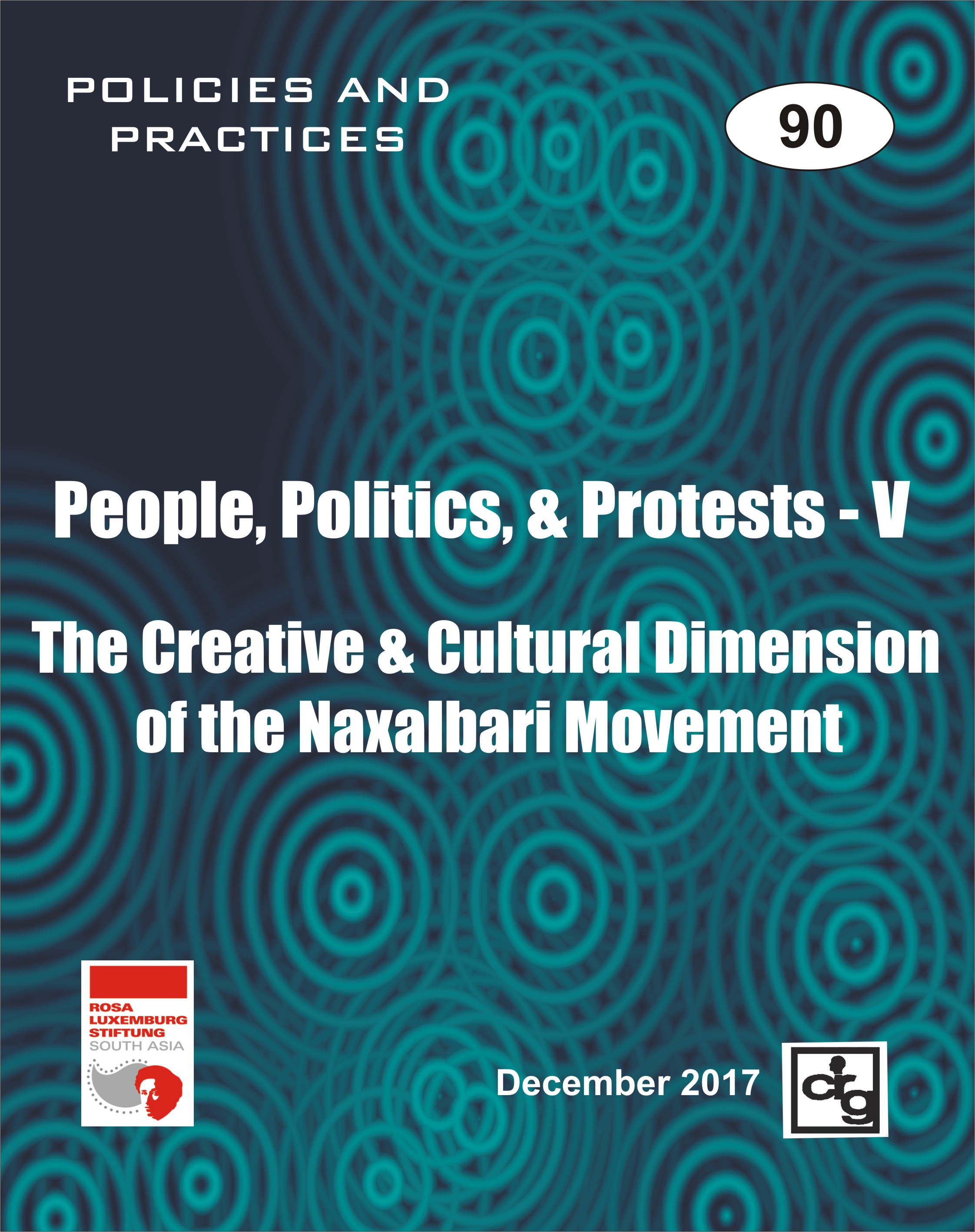 |
| |
|
|
|
| |
Policies
and Practices 89
People, Politics & Protests IV:
Occupy College Street: Notes from the Sixties
In “Occupy College Street: Notes from the Sixties”, Ranabir Samaddar
looks at the tactic of occupation through the lens of the decade of
the sixties of twentieth century in Kolkata. Using the Occupy
College Street movement as his case study, which involved the
gherao of Presidency College and Hindu hostel, Samaddar traces
the history of occupation as a tactic, and goes on to explore the
trajectory of occupation movements elsewhere in the world such as
the Occupy Wall Street movement in New York and the Gezi Park
movement in Istanbul.
Essay by
Ranabir Samaddar
|
|
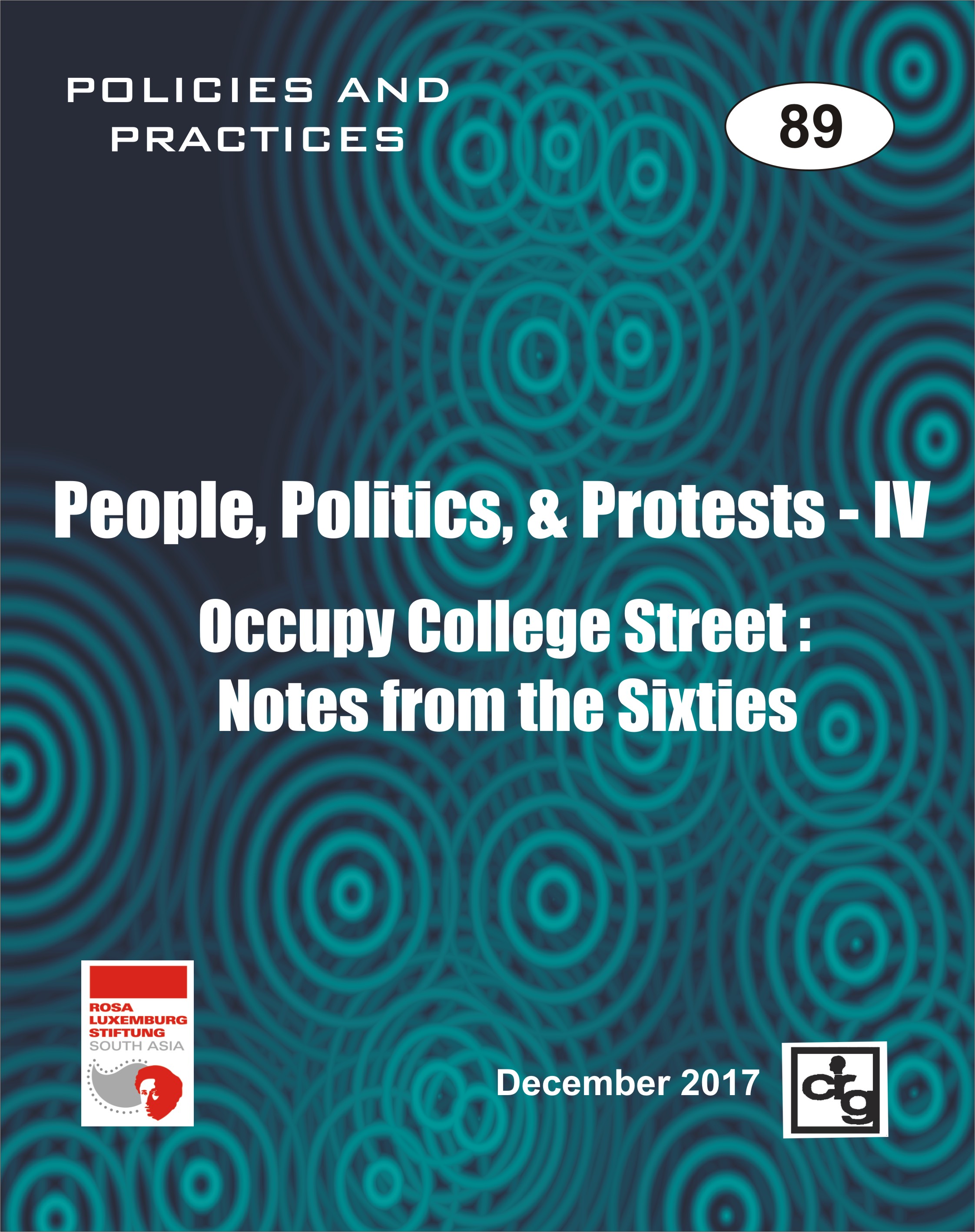 |
| |
|
|
|
| |
Policies
and Practices 88
Logistical
Spaces IX : Conflict & Social Governance in Northeast India
“Conflict and Social Governance in Northeast India” by Paula
Banerjee and Sucharita Sengupta looks at social governance as an
emerging phenomenon in large sections of Northeast India. Defining
social governance as a mode where conflict is managed by
transforming state versus community conflicts into conflicts within
communities, the paper studies the trajectories of social governance
undertaken by the state particularly in the context of Nagaland,
which is historically seen as the most conflict prone state in the
Northeast.
Essays by
Paula Banerjee & Sucharita Sengupta
|
|
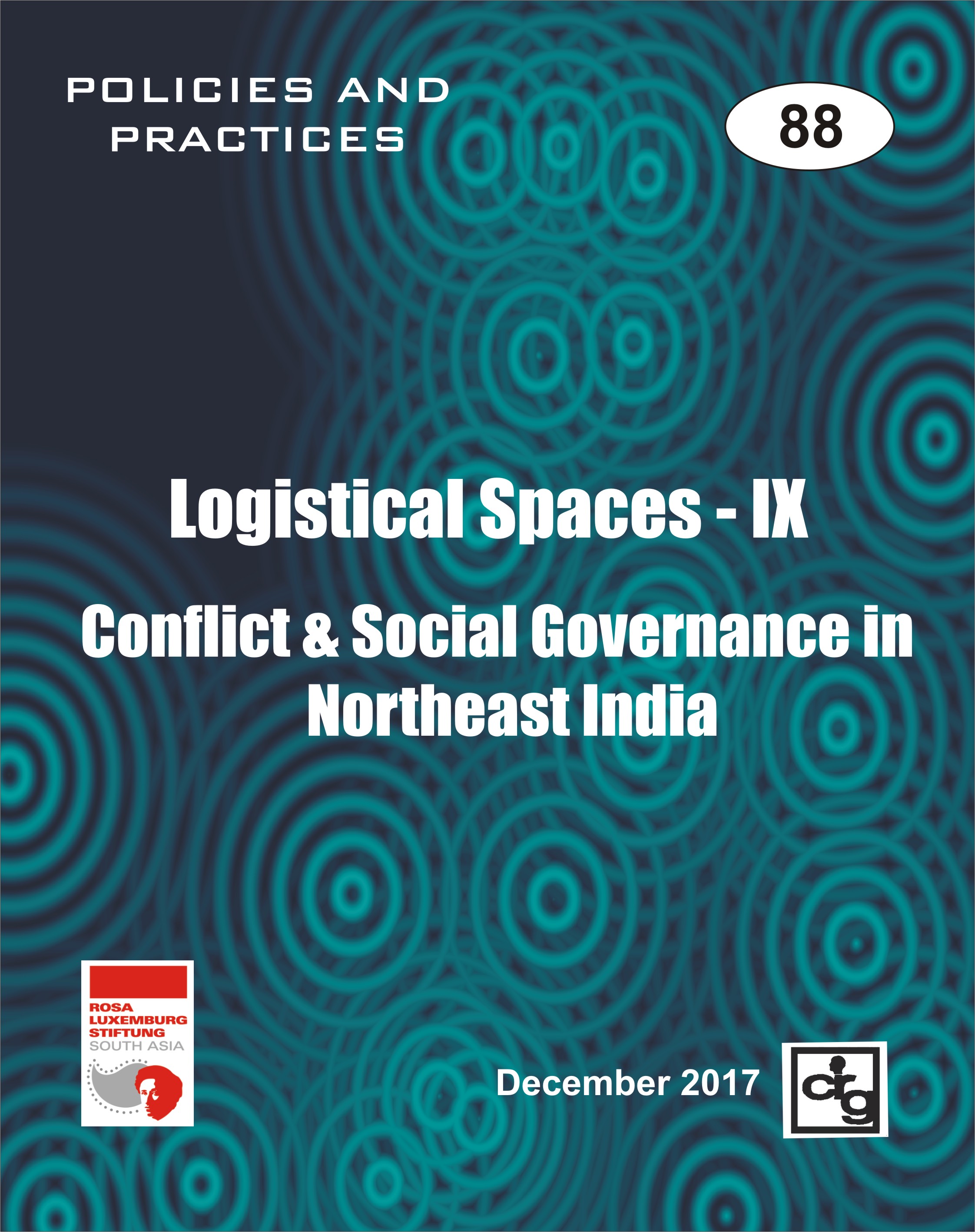 |
| |
|
|
|
| |
Policies
and Practices 87
Logistical Spaces VIII : TRade,
Capital & Conflict
In ‘Trade, Capital and Conflict’, the authors engage in a case study
of the frontier towns of Moreh-Tamu and Champai to explore how the
border trade between India and Myanmar showcases to what extent
development of border trade can lead to economic development in the
region, and consequently shape transitory and geopolitical agendas
in the regional context. Additionally, the paper examines how
regional politics and issues of ethnic identity affect the region
when taken into consideration with the nexus of capital, labour and
logistics.
Essays by
Soma Ghosal and
Snehashish Mitra
|
|
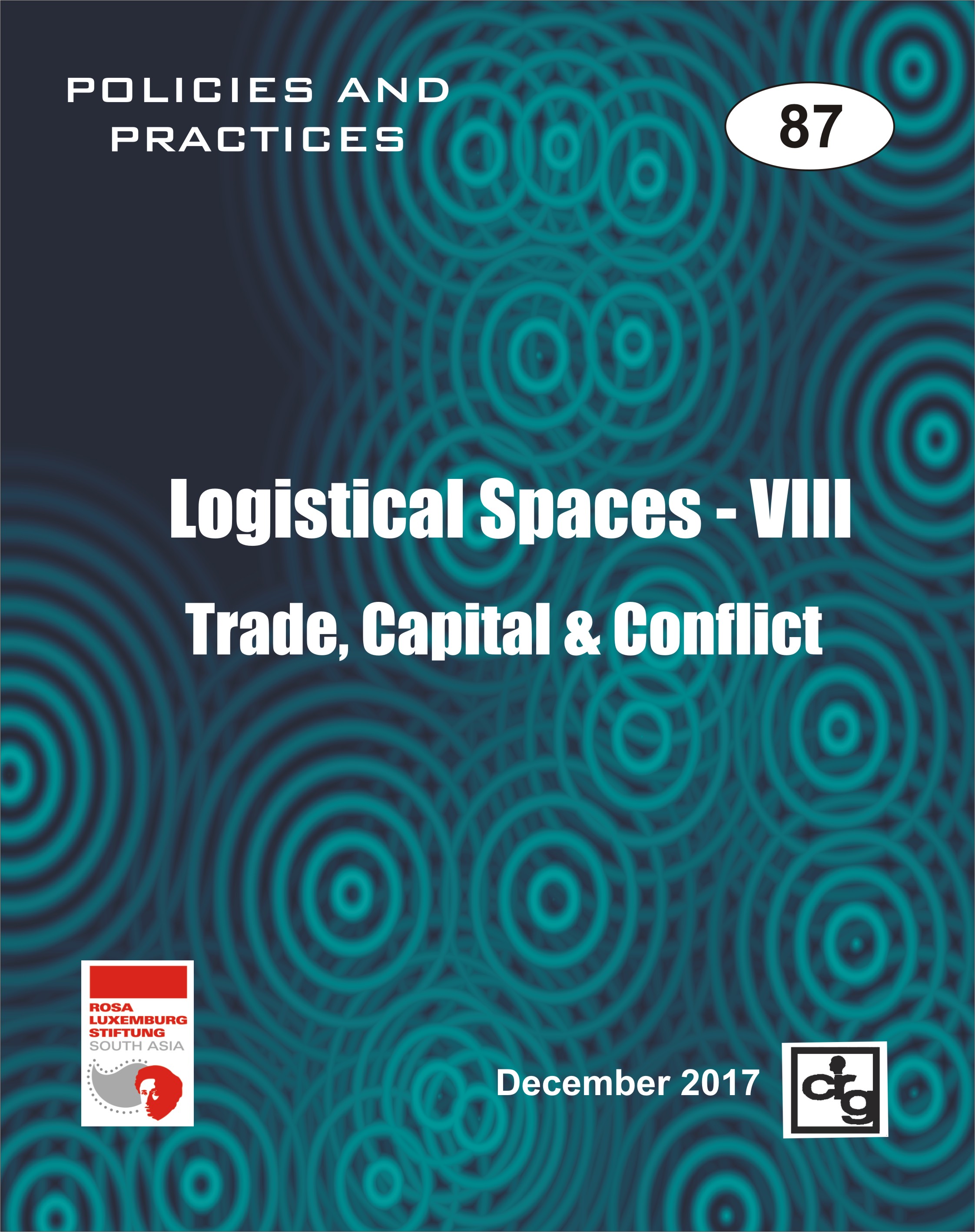 |
| |
|
|
|
| |
Policies
and Practices 86
Logistical
Spaces VII: Finance Capital & Infrastructure Development
Iman Kumar Mitra’s ‘Finance Capital and Infrastructure Development’
looks at the connections between networks of finance capital and
infrastructure-led development in the context of India’s Look East
Policy. It attempts to explore this connection in the backdrop of
the idea of a ‘seamless Asia’ and the many infrastructural
requirements for its realisation in connection with the burgeoning
networks of finance capital in the region.
Essays by
Iman Kumar Mitra
|
|
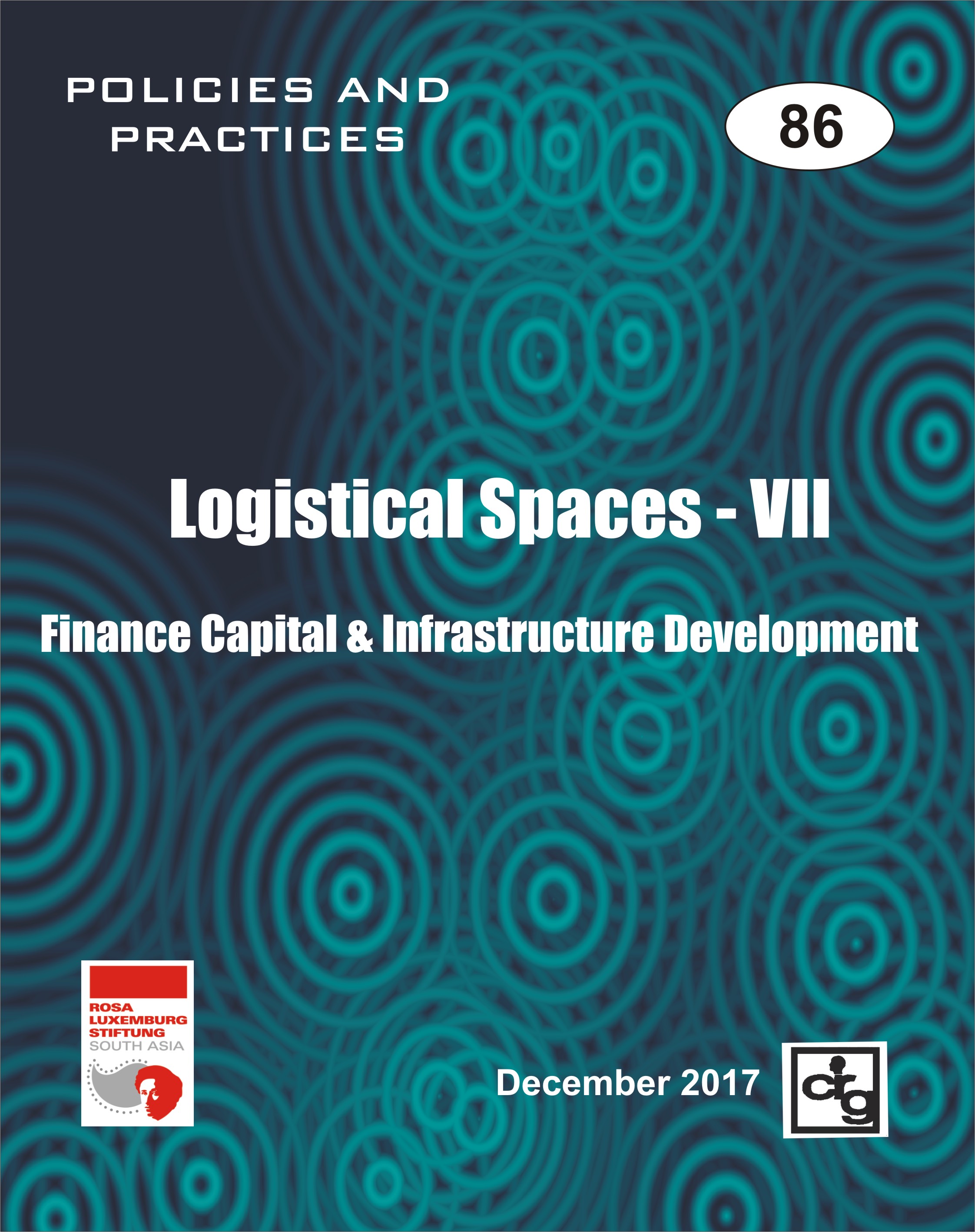 |
| |
|
|
|
| |
Policies
and Practices 85
Logistical Space VI: Logistics and the
Reshaping of Global Governance
Author Anita Sengupta in ‘Interwoven Realities: Logistics and the
Reshaping of Global Governance’, looks at how contemporary changes
in infrastructural logistics are affecting and reshaping the notions
and realities of geopolitics and global governance. The article
takes up the study of Shanghai Cooperation Organization and the
proposed BCIM (Economic Corridor) to argue that the global scope of
logistics will redefine existing balances of power and geo-economic
relations.
Essay by Anita
Sengupta |
|
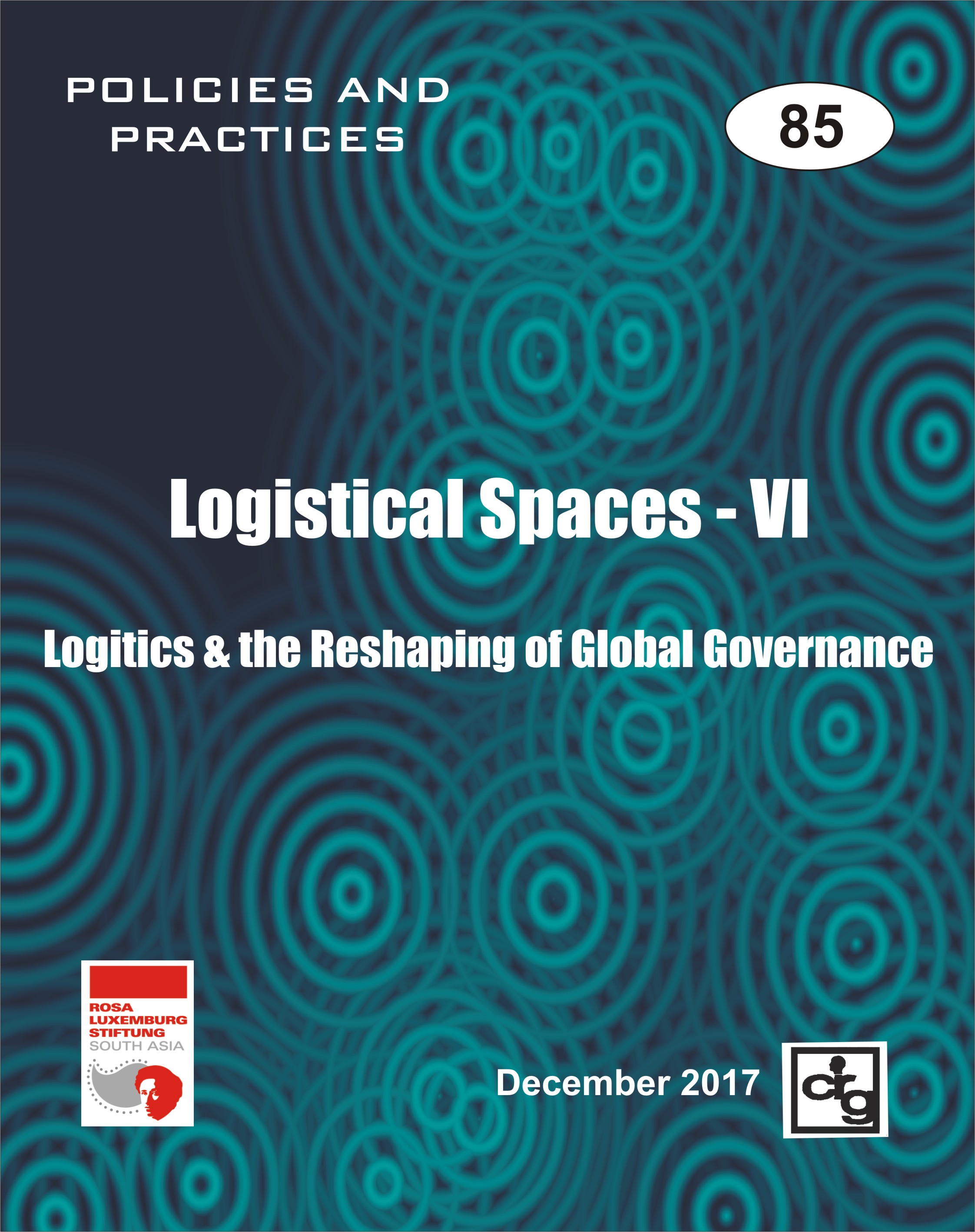 |
| |
|
|
|
| |
Policies
and Practices 84
Logistical Space V :
Representing of Connectivity
In ‘Representations of Connectivity’, Priya Singh attempts
an understanding of the various dimensions and political
implications of the routes that aim to establish and
re-establish connectivity within Asia, its extended
neighbourhood and beyond. The essay contends that an
analysis of the politics and economics behind the ‘New Silk
Roads Project’ is crucial to understanding the relationship
between “security” and “development”.
Essay by Priya
Singh
|
|
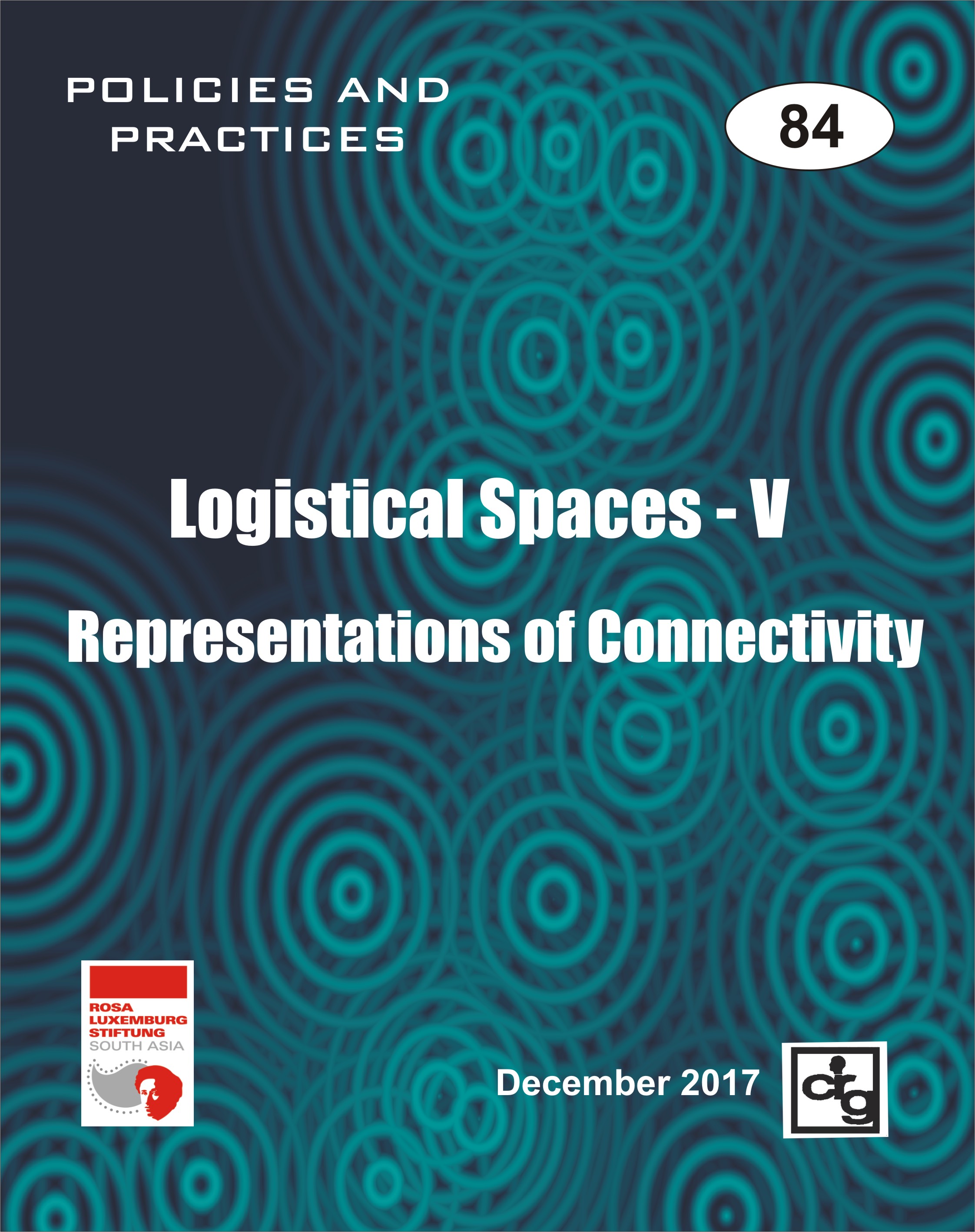 |
| |
|
|
|









